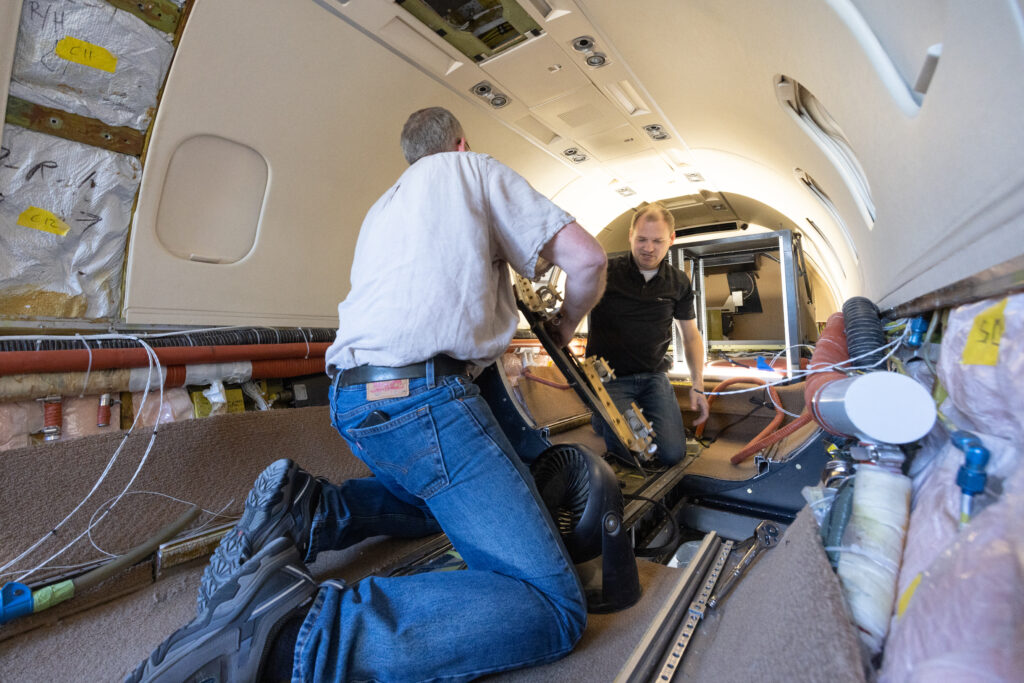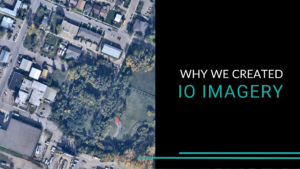
Embarking on a space mission is a complex journey, filled with challenges, uncertainties, and significant technical considerations. At IO Aerospace, we specialize in turning prototypes into operational space reality through comprehensive pre-space testing. In this blog, we will explore the importance of this testing phase, its impact on development cycles, cost reduction, and mission capabilities.
The Significance of Pre-Space Testing:
Before venturing into space, the critical phase of pre-space testing plays a pivotal role in shaping the success of a mission. It involves meticulous testing of various elements, including hardware, software, design, mission planning, calibration, position & timing, and data processing. This comprehensive testing provides end-to-end solutions for space technology development.
The unique value proposition of our pre-space testing lies in our distinctive approach – flying the sensor on a Learjet to simulate the conditions it will encounter in space. By utilizing this real-world testing method, we ensure a thorough evaluation of the sensor’s performance at high altitude and high speed, it’s the closest you can get to space and still bring the instrument back down. While this testing doesn’t simulate a low-gravity, high radiation environment, it does allow you to effectively test the imaging performance and capability. This hands-on approach sets our pre-space testing apart, providing valuable insights into how the sensor will function when deployed in space. Our focus is on addressing the nuanced, custom, and intricate aspects that bridge the gap between prototype and operational reality.
Drawing upon our extensive experience, we navigate the complexities to ensure every detail is accounted for, facilitating the transition from prototype to operational reality.

Strategic Insights from Pre-Space Testing
The decision to invest in pre-space testing may deviate from traditional development roadmaps, but it is a strategic move with profound benefits. By showcasing prototypes and results early in the development process, this approach mitigates risks and creates opportunities for pre-sales. This, in turn, allows organizations to substantiate the market viability of their technology with tangible data and capabilities, attracting investors and advancing missions more efficiently and cost-effectively.

Benefits of Engaging in Pre-Space Testing:
- Collecting Data Sooner: Early engagement in pre-space testing allows for the collection of valuable data in the initial stages of development, providing insights crucial to mission success.
- Informing Investors and Potential Clients: The early presentation of prototypes and results is an informative narrative for investors and potential clients, instilling confidence in the technology’s capabilities.
- Generating an Early Revenue Stream: Data collected during pre-space testing can be leveraged to create an early revenue stream, helping to fund ongoing development efforts.
- Validating Assumptions: Testing assumptions about technology functionality and performance is a key aspect of pre-space testing, ensuring alignment with mission objectives.
- Building Data Management Systems Early: Development and refinement of data management and processing systems early on contribute to the efficiency and effectiveness of handling mission data.
- Non-Space-Hardened Systems: The equipment used in pre-space testing brings flexibility and cost-effectiveness to the development process as it doesn’t have the same stringent standards as space-hardened systems.
Addressing Development Challenges
- Shortening Extended Development Cycles: Pre-space testing accelerates development cycles, reducing the time needed to move from prototype to operational reality.
- Mitigating Mission Uncertainties: Comprehensive testing minimizes uncertainties in mission capabilities, enhancing the likelihood of a successful mission.
- Optimizing Costs: By offering a cost-effective solution without compromising mission objectives, pre-space testing addresses financial challenges associated with space technology development.
- Effective Risk Management: The early showcasing of prototypes aims to mitigate risks in the development roadmap, offering a reliable solution to the uncertainties associated with space missions.
- Validating Market Viability: Positioning pre-sales opportunities as a strategic benefit addresses concerns about technology market viability, attracting investors and validating market potential.
In navigating the intricate path from prototype to operational space reality, pre-space testing emerges as a critical and strategic phase. Our focus is not only on the technical aspects but also on providing educational insights into the nuances of this process. Empowering organizations with knowledge and understanding, we aim to contribute to the success of space missions, fostering efficiency, reducing risks, and advancing capabilities in the vast expanse of space exploration.



